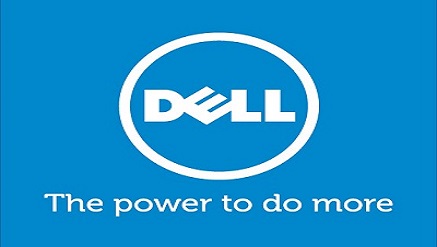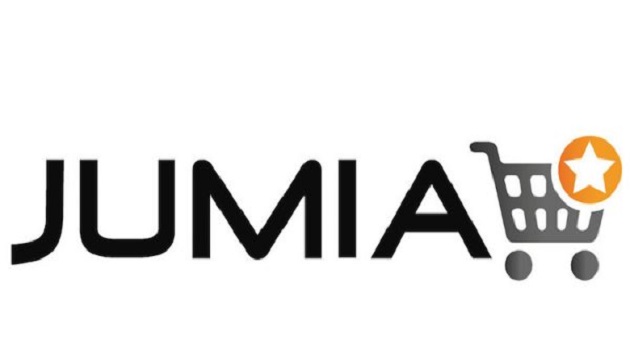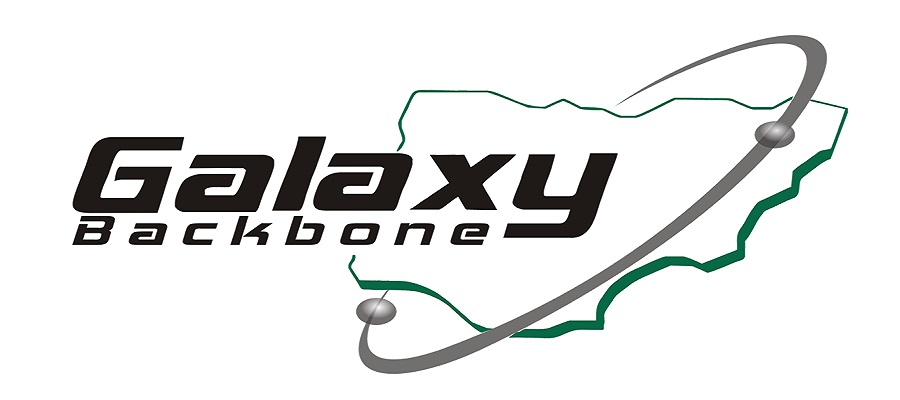E-Business
Dell Speeds Up Process to Address eDellroot Certificate Security Lapses

Dell Inc., has reacted to Nigeria CommunicationsWeek report (http://www.nigeriacommunicationsweek.com.ng/e-business/dell-acknowledges-new-laptops-contain-security-vulnerability#sthash.zudmO6JW.dpuf) on Wednesday, saying that it has taken critical steps in address the issue.
Dell Inc., a major U.S. Computer Company had acknowledged a security hole exists in some of its recently shipped laptops that could make it easy for hackers to access users’ private data.
A pre-installed program on some newly purchased Dell laptops that can only be removed manually by consumers makes them vulnerable to cyber intrusions that may allow hackers to read encrypted messages and redirect browser traffic to spoofs of real websites such as Google or those belonging to a bank, among other attacks.
But in a twitter message sent to our reporter, Laura Thomas, chief blogger for Direct2Dell.com disclosed that it came to Dell’s notice that a certificate (eDellRoot), installed by “Dell Foundation Services” application on the PCs, unintentionally introduced a security vulnerability. According to Thomas, “The certificate was implemented as part of a support tool and intended to make it faster and easier for our customers to service their system. Customer security and privacy is a top concern and priority for Dell; we deeply regret that this has happened and are taking steps to address it.
“The certificate is not malware or adware. Rather, it was intended to provide the system service tag to Dell online support allowing us to quickly identify the computer model, making it easier and faster to service our customers. This certificate is not being used to collect personal customer information. It’s also important to note that the certificate will not reinstall itself once it is properly removed using the recommended Dell process.
“We have posted instructions to permanently remove the certificate from your system here. We will also push a software update starting on November 24 that will check for the certificate, and if detected remove it. Commercial customers who reimaged their systems without Dell Foundation Services are not affected by this issue. Additionally, the certificate will be removed from all Dell systems moving forward.
“Your trust is important to us and we are actively working to address this issue. We thank customers such as Hanno Böck, Joe Nord and Kevin Hicks, aka rotorcowboy, who brought this to our attention. If you ever find a potential security vulnerability in any Dell product or software, we encourage you to visit this site to contact us immediately
*****Update 11/25/2015*****
“Since Monday, our teams have been working hard to address the security issue caused by the eDellRoot certificate. When we became aware of the issue, we immediately dug into all our applications that get pre-loaded on our PCs. We can confirm we have found no other root certificates on our factory installed PC images. What we did find was that the Dell System Detect application and its DSDTestProvider root certificate had similar characteristics to eDellRoot. Thank you again Hanno Böck for calling this to our attention, as well as topg who commented below”.
In the case of Dell System Detect, the Chief Blogger for Direct2Dell.com said that customer opts to download the software proactively to interact with our support website so they (Dell) can provide a better and more personalized experience.
“Like eDellRoot, the certificate in question was designed to make it faster and easier for our customers to get support. Unlike eDellRoot, this certificate is not related to software that was pre-installed on our systems.
“The impact from Dell System Detect is limited to customers who used the “detect product” functionality on our support site between October 20 and November 24, 2015. The application in question was removed from the support site on November 24 and a replacement application without the certificate is now available. We are proactively pushing a software update to address the issue for our consumer systems. Our commercial customers can either manually remove the certification or use their system management tools like SCCM to do so (we will be providing instructions on this shortly). If you choose the manual option, we have updated instructions on our site http://www.dell.com/support/edellroot to permanently remove this certificate.
“Note, these are updated instructions for removing both eDellRoot and DSDTestProvider from any folders where they may be stored. If you previously uninstalled eDellRoot, we recommend you go through the process again to ensure a thorough sweep.
“WIRED has noted that “security is far easier to promise than it is to achieve.” We know that your trust is harder to win than it is to lose. Once we know we have addressed these issues and our customers have what they need to ensure their systems are safe, we will provide an account of how the issues were introduced – not only for your information, but so we can improve our processes.
“In today’s world of ever-increasing cybersecurity threats, we all need to be vigilant. And that is the promise that we make – Dell will remain ever vigilant against security threats and we will respond with the utmost speed and accuracy when we become aware of issues that can impact our customers”.
E-Business
Galaxy Backbone Celebrates the Federal Government’s Paperless Civil Service Milestone

Galaxy Backbone (GBB) aligns with and celebrates the successful announcement by the Office of the Head of the Civil Service of the Federation on the achievement of a Paperless Civil Service, a significant milestone in Nigeria’s public sector reform and digital transformation agenda.

The milestone was formally highlighted at a press briefing led by the Head of the Civil Service of the Federation, Mrs. Didi Esther Walson-Jack, who commended Galaxy Backbone for its sustained support and contribution throughout the implementation of the programme.
GBB has played a critical role in enabling this transition by providing secure, scalable, and shared digital infrastructure that supports the digitisation of government processes across Ministries, Departments and Agencies (MDAs). Through the 1Government Cloud, MDAs have been empowered to migrate from paper-based workflows to digital platforms, improving efficiency, collaboration, data security, and service delivery across the Federal Civil Service.
In addition, GovMail, GBB’s secure government email platform, has strengthened official communication, enhanced records management, and reinforced cybersecurity standards—key pillars in sustaining a paperless operating environment.
Galaxy Backbone acknowledges the collective efforts of the Office of the Head of the Civil Service of the Federation, Permanent Secretaries, Directors of ICT, consultants, partners, and dedicated public servants whose commitment and collaboration ensured the smooth delivery of this initiative.
The Managing Director/Chief Executive Officer of Galaxy Backbone, Prof. Ibrahim Adeyanju, was represented at the press briefing by Akintayo Bamisaye, Acting Group Head, Research, Digital Innovation and Skills Department (RDIS).
GBB describes the achievement as a strong close to 2025 and reaffirms its commitment to supporting the Federal Government in building a modern, efficient, and digitally enabled public service.
E-Business
Jumia CEO says Black Friday Signals Nigeria’s E-Commerce Maturity

At the close of 2025, Temidayo Ojo, the CEO of Jumia Nigeria, reflected on a year-end shopping season that points to the growing maturity of the country’s e-commerce market. “Black Friday is no longer a single, short-lived spike in activity,” he said.

“It has become a familiar, anticipated moment in the retail calendar, where consumers shop deliberately and with confidence.”
Preliminary KPIs for the two months ended November 30, 2025, show strong year-on-year growth in both orders and Gross Merchandise Value (GMV), with GMV growth outpacing order growth. This indicates that customers are placing fuller, more considered baskets rather than shopping in fragmented transactions. Nigeria ranked among Jumia Group’s better-performing markets, with engagement remaining steady throughout the Black Friday period rather than spiking briefly and tapering off.
A key factor behind this performance is the growing familiarity of consumers with online shopping. Customers are increasingly leveraging platform features such as saved carts, brand stores, and price comparison tools to plan purchases in advance. This trend suggests that digital commerce is becoming embedded in everyday habits rather than being viewed as a one-off event.
Ojo also highlighted the role of Jumia’s JForce network in connecting digital commerce to local communities. “Our agents are critical to ensuring that customers across Nigeria, including secondary cities and smaller communities, have access to variety, consistent pricing, and reliable delivery,” he said. “During peak periods like Black Friday, JForce agents can respond faster, serve more customers efficiently, and build stronger local relationships. This isn’t just a distribution channel—it’s a pathway to sustainable income and inclusion.”
Reflecting on the overall performance, the CEO concluded: “What we’re seeing this year-end is steady engagement across categories, stronger consumer confidence, and partners like our JForce agents benefiting from increased activity.
“It confirms that Nigeria’s e-commerce ecosystem is maturing, growing in a more structured and resilient way. As the December Holiday Sale continues, we expect these patterns of familiarity, trust, and participation to sustain momentum and drive both commerce and community impact across the country.”
E-Business
Galaxy Backbone Tops FG’s Website Performance Ranking

Galaxy Backbone Limited (GBB) has been ranked first overall in the 2025 Federal Government Website Performance Scorecard.

This is a landmark achievement for Nigeria’s digital economy.
The ranking, conducted by the Bureau of Public Service Reforms (BPSR), is the definitive benchmark for digital excellence and transparency across all Ministries, Departments, and Agencies (MDAs).
Professor Ibrahim Adepoju Adeyanju, managing director and CEO of Galaxy Backbone, received the award during a ceremony in Abuja.
He described the feat as a validation of the agency’s“Nigeria First”data sovereignty strategy and its relentless pursuit of service excellence.
This recognition comes as the Federal Government intensifies its push to achieve a fully paperless civil service by December 31, 2025.
GBB has been the primary architect of this transition through its 1Gov Enterprise Content Management (ECM) platform, which now hosts the operations of almost all federal MDAs.
The award adds to a growing list of accolades for Galaxy Backbone in 2025, following its recent win of the “International Standard Excellence Award for Best IT Service Provider.”
As the central hub for government shared services, GBB’s performance serves as a blueprint for other agencies currently undergoing digital transformation.
With its expanded fiber-optic backbone now covering over 13 states and its secure cloud solutions, Galaxy Backbone remains the cornerstone of Nigeria’s vision to become a leading digital nation by the end of the decade.

 Telecom3 days ago
Telecom3 days agoNnaemeka Ani – The Architect of ‘Code and Courage’

 E-Financial3 days ago
E-Financial3 days agoNigeria’s N58.18trn Budget and Rising Cost of Deficit Governance

 Telecom3 days ago
Telecom3 days agoMTN Nigeria Appreciates Partners, Customers at Lagos Prestige Experience

 Telecom2 days ago
Telecom2 days agoT2 Faces NCC Probe in Benue Over Major Service Outage in 9 LGAs

 Telecom2 days ago
Telecom2 days agoMTN Nigeria Crowns Ayo Benzi Winner of Next Afrobeats Star

 E-Business2 days ago
E-Business2 days agoJumia CEO says Black Friday Signals Nigeria’s E-Commerce Maturity

 E-Financial2 days ago
E-Financial2 days agoGTCO Secures Regulatory Approvals to Raise N10bn in Private Placement

 Telecom2 days ago
Telecom2 days agoNCC Grants 45 Days for Telecoms Firms to Fix Unapproved Shareholding Changes














